What are Webhooks in Magento 2
Discover webhooks in Magento 2: a powerful tool to reduce manual workload for business owners. Learn how they work, their key features, and easy configuration tips.
Summer Nguyen | 11-11-2024

Choosing the right ecommerce marketplace can be challenging at times, especially if you are a vendor or a merchant. It is, however, sometimes equally daunting if you are a customer wanting to buy a product via your smartphone. With ecommerce marketplaces, there are some variables to consider. These include:
In this article, I have listed the Top leading ecommerce marketplaces online with respect to the region, to help you make a better, more calculated decision. Without further ado, let’s get into it.
As ecommerce platforms and online sales gain widespread popularity, marketplaces continually innovate to enhance customer satisfaction—a boon for third-party sellers. These platforms go to great lengths to simplify marketing, selling, and fulfillment for brands and retailers, recognizing that an easy-to-use platform translates to a seamless experience for shoppers and encourages repeat business.
Here are three key advantages:
For newcomers to online selling, marketplaces offer an excellent avenue to generate revenue and establish a brand while driving traffic to a new ecommerce website. Once approved as a third-party seller, you can effortlessly upload your product feed and commence selling. High-end marketplaces often offer easy integration, enabling users to streamline processes and mitigate potential risks with their SaaS solutions.
Major online marketplaces have established programs to guide sellers through the realms of marketing, selling, and fulfillment.
For instance, platforms like Amazon Marketplace, eBay, and Google provide access to Amazon Advertising, eBay Promotions Manager, and Google Shopping Actions—digital marketing programs equipped with tools to showcase new products to the right customers at opportune times.
Similar options facilitate meeting consumer expectations for swift and free deliveries, such as Fulfillment by Amazon (FBA) and eBay Global Shipping, allowing marketplaces to handle warehousing, packing, and shipping on behalf of sellers.
Many marketplace operators boast massive built-in audiences, with billions of active monthly visitors. Amazon, eBay, and Walmart alone attract nearly 3 billion visitors each month. A noteworthy trend is that a significant portion of consumers initiate product searches directly on these marketplaces, bypassing search engines and retail websites.
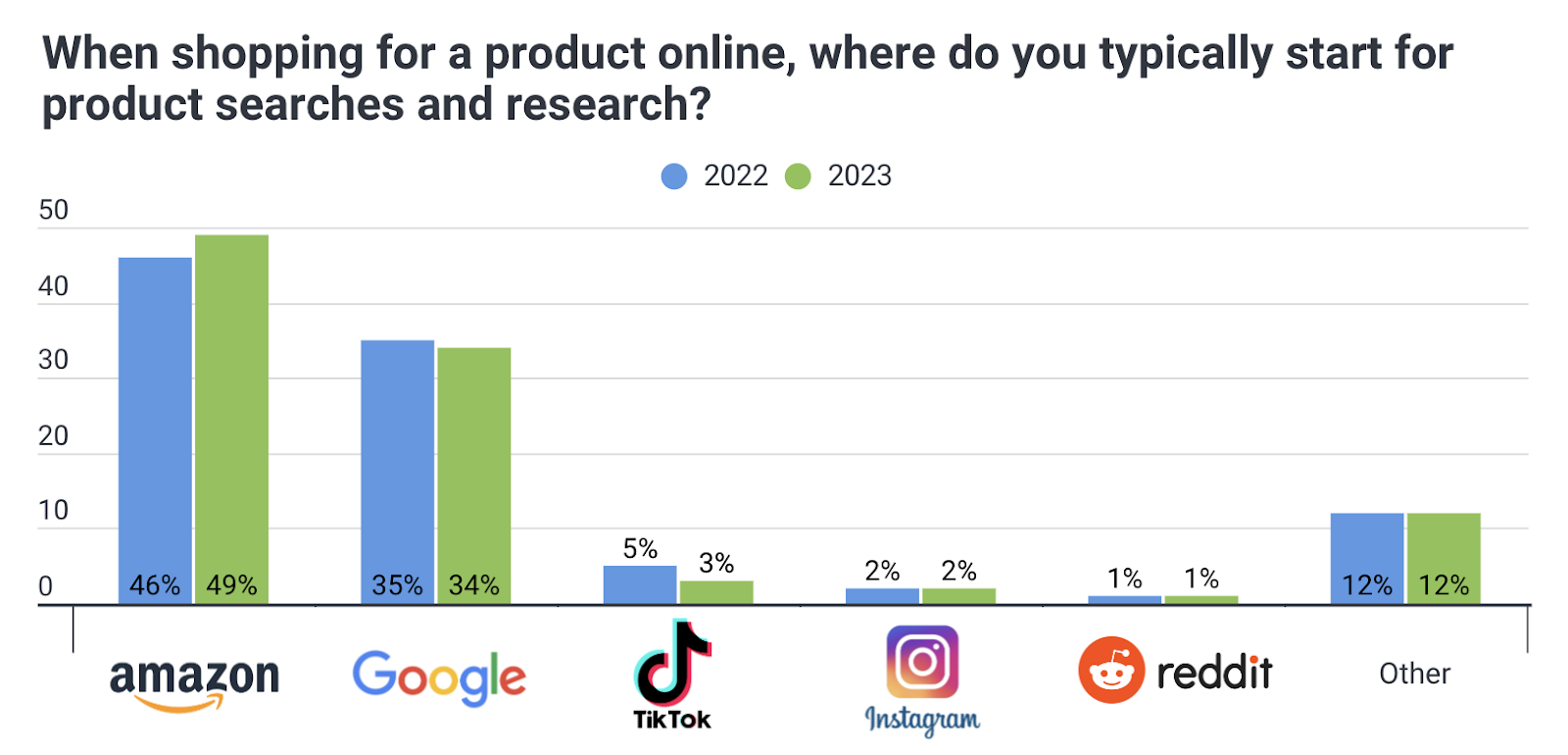
In fact, 49% of all product searches commence (and often end) on Amazon. Failing to appear in these search results could result in losing marketplace sales to competitors before consumers even consider visiting your online store.
If your small business seeks a quick and straightforward method to showcase products to shoppers, venturing into ecommerce marketplaces is an excellent starting point. Although your choices may be somewhat more constrained compared to established brands, there are various options to explore.
For instance, marketplaces like Walmart or Target Plus, known for their stringent entry requirements, typically require a track record of timely deliveries and positive feedback before accepting you as a third-party seller.
On the other hand, platforms like Amazon and eBay allow you to set up a seller account promptly. As you accumulate positive reviews and ratings on these platforms, you can then apply to expand your presence to additional marketplaces.
Even if your online store is thriving, diversifying your presence by uploading products to select ecommerce marketplaces is an effective way to broaden your reach.
Neglecting marketplaces in your strategy might result in missed sales opportunities, given that consumers now anticipate having multiple options when purchasing the same product.
This trend is particularly evident with Amazon, where 75% of consumers, in 2022, say they check prices and product reviews on Amazon before making a purchase, according to Feedviosor’s report. It’s also stated that 31% of consumers start searching for products through leading marketplaces in the region such as Amazon, Tmall, etc.
Expanding your online store to these platforms enables shoppers to access the information and offers they need, allowing them to make purchases where, when, and how they prefer.
Elevate your product listings by focusing on compelling product titles, descriptions, and categories. Investing effort in these elements increases the likelihood of your listings appearing at the top of marketplace search results. Services like Feedonomics can enhance your marketplace listings for improved sales and visibility.
While most product pages feature ads, these differ from the typical popups and banners that users often block or overlook. These marketplace ads, however, capture attention and drive engagement.
To achieve genuine success on marketplaces, it’s essential to make a modest investment in digital marketing. This effort is crucial to ensure your products stand out prominently and capture the attention of potential customers.
Understand the unique set of seller transaction fees, commissions, and requirements on each online marketplace. This strategy ensures that these channels remain profitable for your business in the long run.
Adjust product prices based on competitor pricing within marketplaces to remain competitive. Algorithmic repricers can automate this process, helping you stay agile in the dynamic pricing landscape.
In 2022, about 75% of shoppers are strongly influenced by the appeal of free shipping. To manage fulfillment costs effectively, explore diverse shipping strategies, such as leveraging programs like Amazon FBA or utilizing third-party logistics providers like ShipBob or ShipStation.
Streamline your ecommerce business growth by integrating with an ecommerce platform compatible with numerous marketplaces. This allows you to list products once and easily expand to additional marketplaces when ready.
Spread the word about your presence on new marketplaces through emails, social media pushes, or website call-to-action buttons. Ensure your customers are aware they can now purchase from you on their preferred marketplaces.

Amazon, renowned as the world’s foremost ecommerce marketplace, owes its popularity to robust shipping and fulfillment capabilities, coupled with a consistently superior shopping experience.
Notably, Amazon is not only a leading marketplace but also ranks as the world’s second-largest search engine, with a staggering 50% of product searches conducted on its platform.
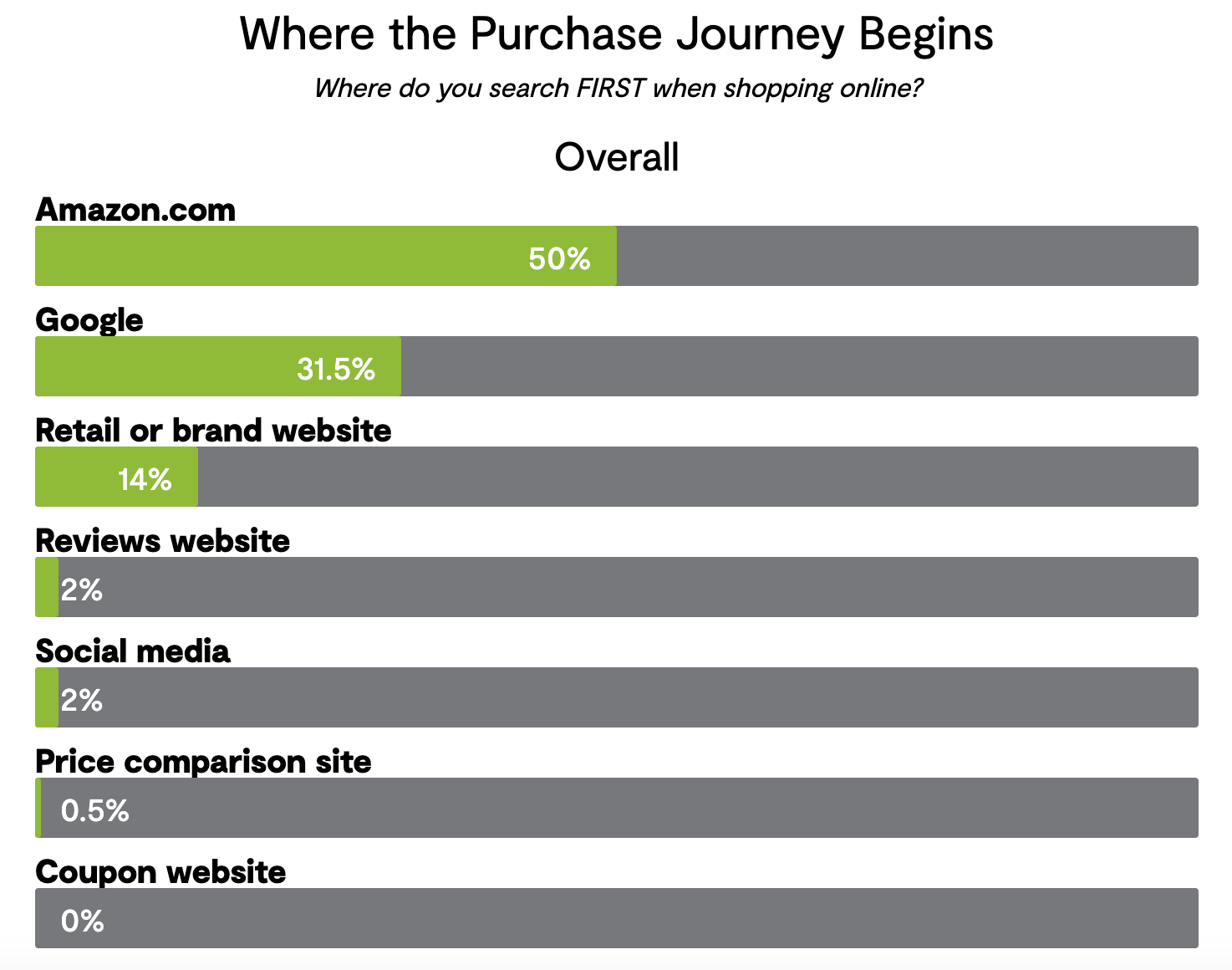
To leverage the full spectrum of Amazon’s features, initiating the process involves registering your brand through Amazon’s Brand Registry. Once brand registration is complete, you can embark on establishing your Amazon Store. This entails selecting a theme and meticulously crafting pages, akin to developing your own website.
The emphasis lies in ensuring straightforward navigation, enabling customers to effortlessly locate their desired products.
Fees: Vary by category, averaging around 15% per sale.
Top regions: United States, Germany, United Kingdom, Japan.
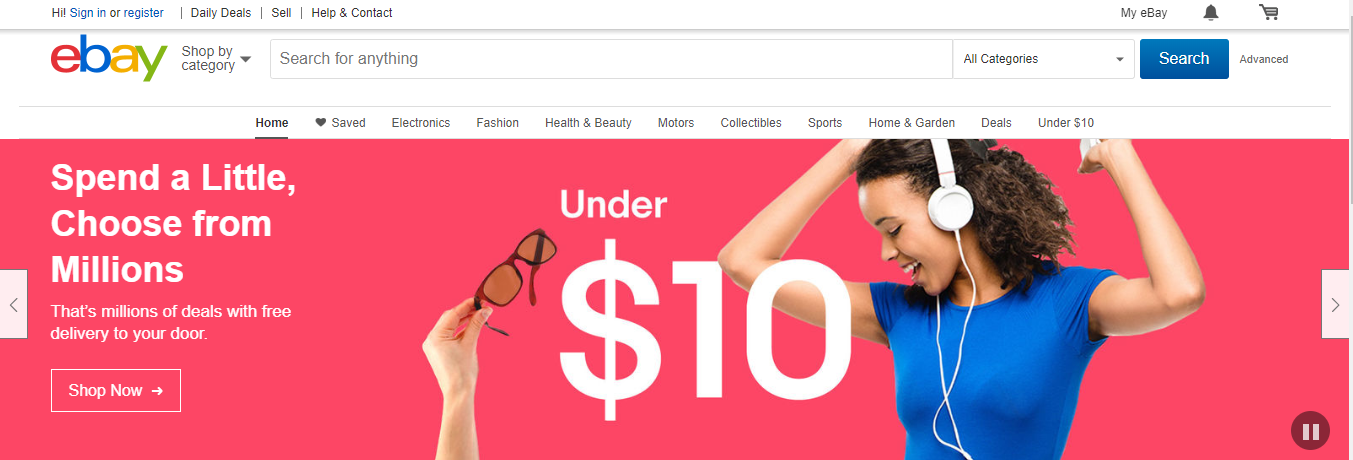
eBay is one of the most recognized ecommerce platforms that has drawn a lot of attention from customers and small business owners in the early 2000s, eBay is therefore targeted more towards customers and less towards sellers since there are lots of unknown brands and single products on sale.
Expanding your reach to a global audience? eBay, with 132 million active buyers by Q2 2023 and a $2.5 billion quarterly revenue by Q3 2023, is a formidable choice. Operating in 190 markets worldwide, eBay provides ample opportunities for growth. eBay’s selling fees include an insertion fee when creating a listing and a final value fee upon a sale. Notably, there are no setup, monthly, or annual fees to concern yourself with, making it a straightforward option for accessing a vast global market share.
Fees: Final value fee of a sold item, which can reach up to 14.35% of the sale price, with an additional 30¢ processing fee.
Top regions: United States, United Kingdom, Germany, China, Australia.
Related post: Incredible eBay Alternatives for Smart Sellers
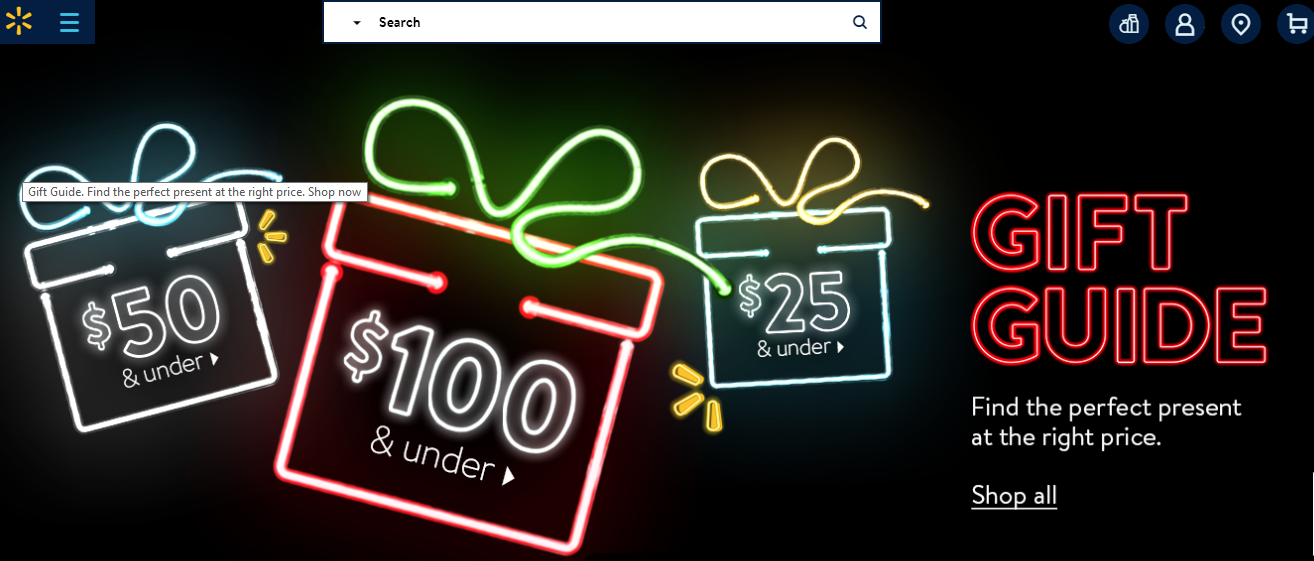
Walmart has secured its position as the third-most-visited online retailer in the US, attracting over half a million monthly visitors. In 2023, the retail giant reported an impressive $53.4 billion in ecommerce sales, marking an 11.7% surge from the previous year.
Walmart’s marketplace, open to third-party sellers in 35+ product categories, has a global reach. To become a Walmart partner, follow these five steps:
Share details about your business and the products you intend to sell. Set up your seller account post-approval and contract receipt. Sign the Walmart Retailer Agreement and complete your seller profile. Onboard using various integration methods, add items, and conduct order tests. Request launch, subject to a final review by Walmart before you commence selling.
An integral part of the onboarding process allows Shopify store connection with Walmart.com’s Marketplace (currently available only for US-based brands). This integration facilitates product catalog upload, listing creation, inventory synchronization, and order details import for streamlined fulfillment through Shopify.
Fees: Commission fees range from 6% to 15%.
Top regions: United States, Canada, India.
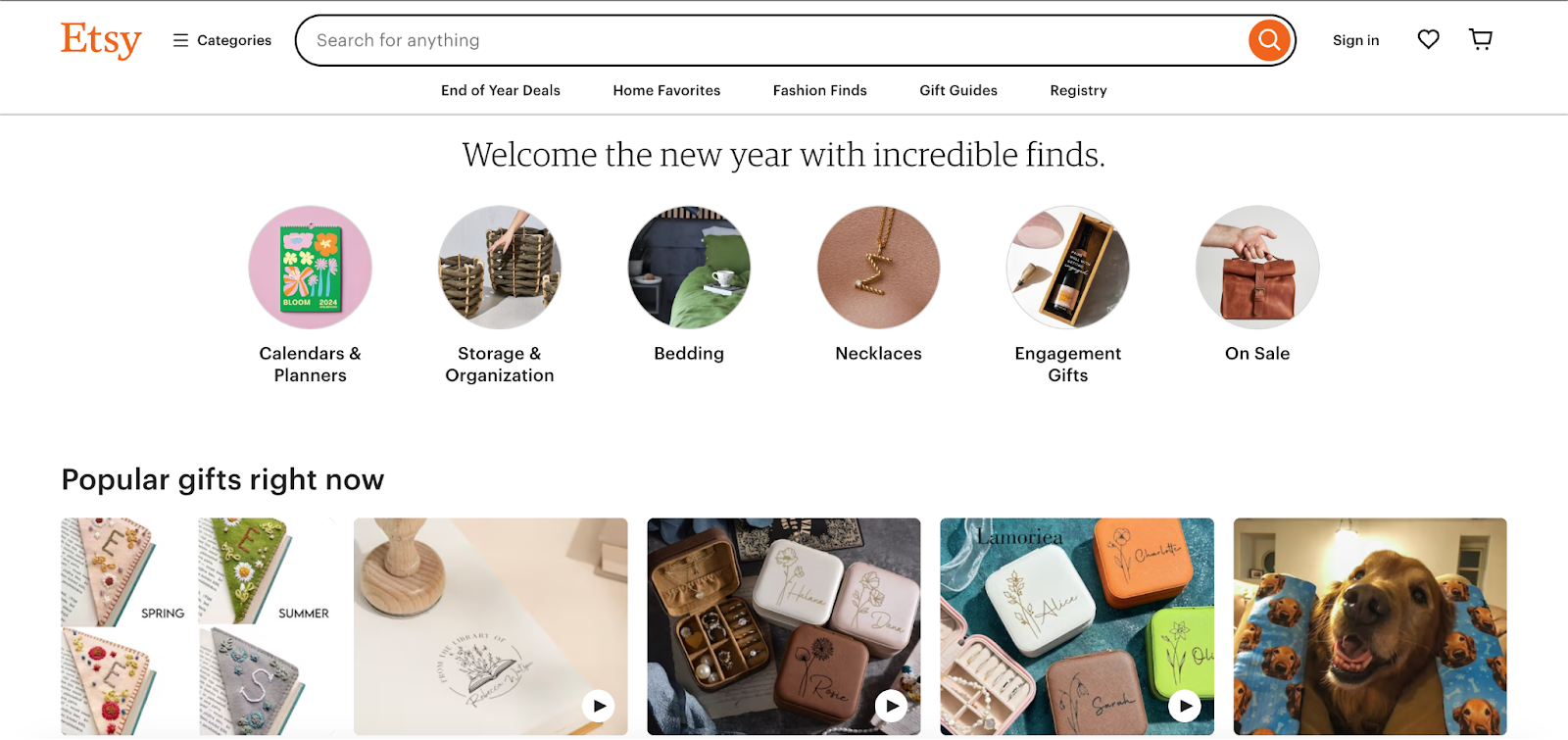
Etsy, a prominent North American ecommerce platform, primarily caters to the arts and crafts community, focusing on handmade, vintage, and collector’s items. According to Etsy’s annual report in 2022, Etsy generated over $2.566 billion, marking a 10.2% increase compared to the previous year.
For small businesses centered around crafts, Etsy provides a logical platform for product listings, offering a straightforward process—simply create an account and begin listing items. It’s worth noting that Etsy imposes a listing fee, but these charges are generally lower than those of other mentioned marketplaces.
Fees: A transaction fee of 6.5% of the displayed price.
Top regions: United States, United Kingdom, Canada, Germany, France.
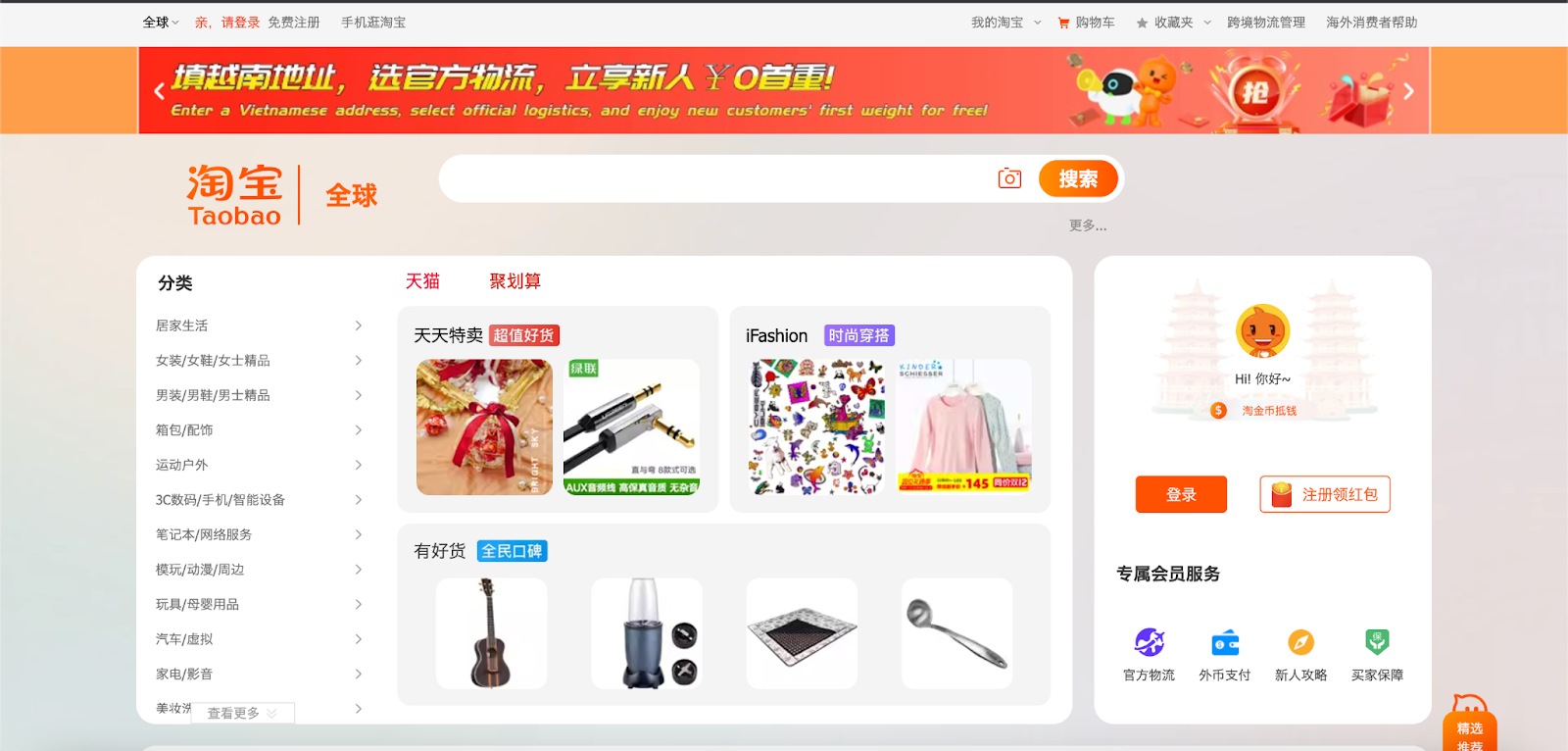
Established in 2003 by Jack Ma, Taobao stands out as a prominent e-commerce platform in China as of July 2022. What distinguishes Taobao from AliExpress is its consumer-to-consumer (C2C) business model, akin to being the eBay equivalent in China. By September 2023, the Taobao app boasted nearly 895 million monthly active users.
Fees: None
Top regions: China, Taiwan, Hong Kong, the United States, and Singapore.
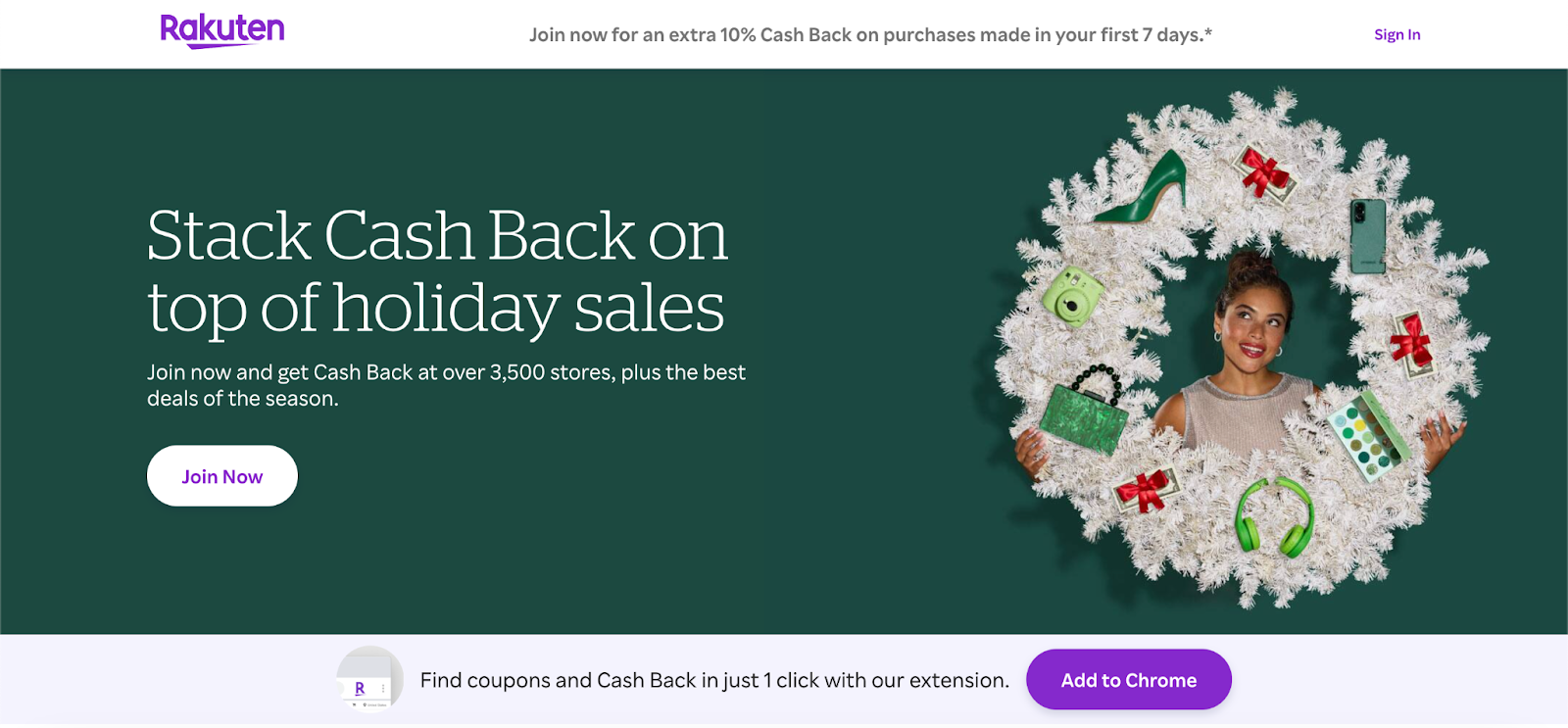
Rakuten, headquartered in Japan, experienced a 23% growth in Gross Transaction Value (GTV) during 2022 compared to the previous year. The platform boasts a vast customer base of 1.7 billion members and offers a diverse range of products, including electronics, fashion, and pet supplies.
For merchants aiming to sell on Rakuten, a prerequisite involves applying for approval. Approved brands can personalize their storefronts, a feature beneficial for establishing a distinctive brand identity on the platform and attracting customers.
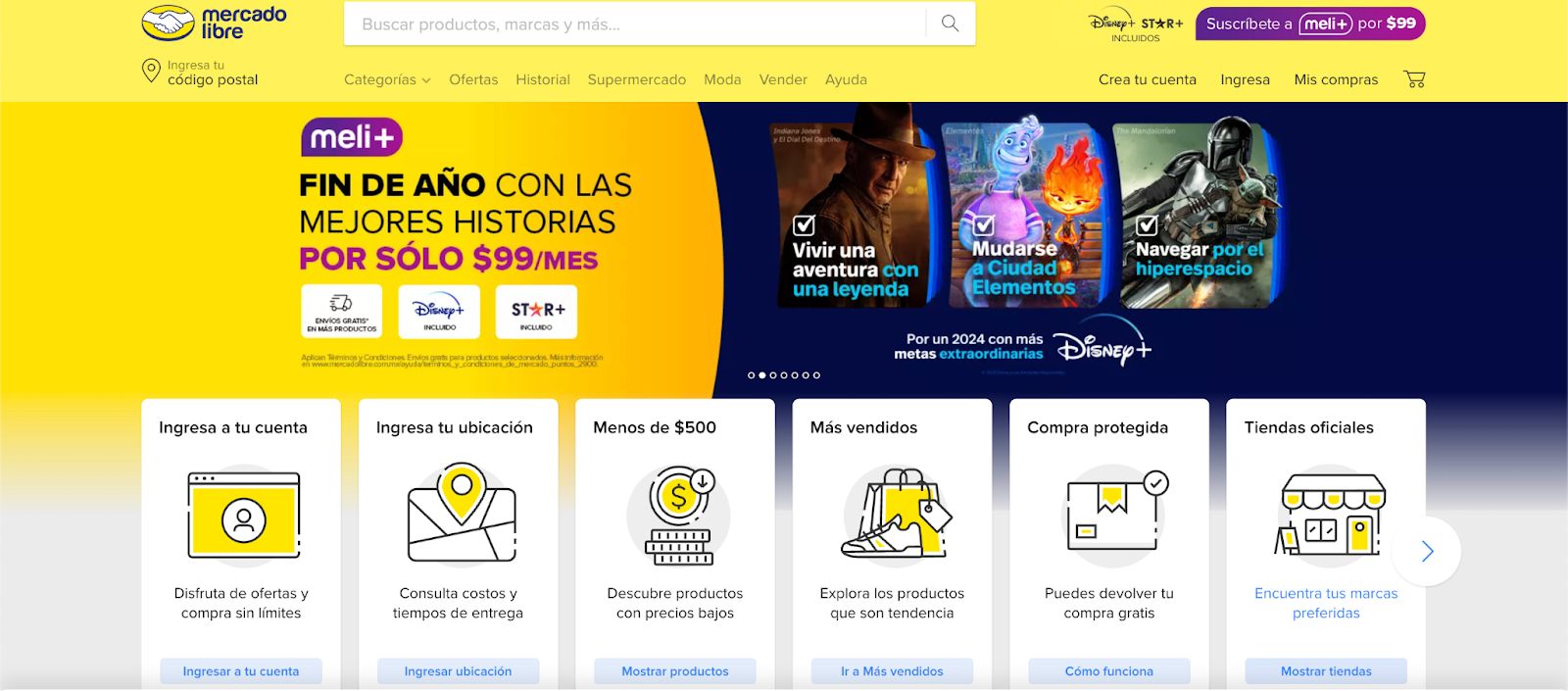
Mercado Libre stands as a formidable online retailer and payments platform in Latin America, established in 1999 and evolving into Amazon’s primary competitor in the region.
As outlined in its Q3 2022 shareholder letter, the ecommerce marketplace achieved substantial success, generating $2.7 billion in revenue during the quarter—a noteworthy 60.6% year-over-year increase. The three major markets, Brazil (+20%), Argentina (+87%), and Mexico (+23%), all exhibited robust growth in gross merchandise volume (GMV) during the same period.
Fees: Varied by country and category, potentially exceeding 16% per order.
Top regions: Argentina, Mexico, Chile, Colombia, Uruguay.
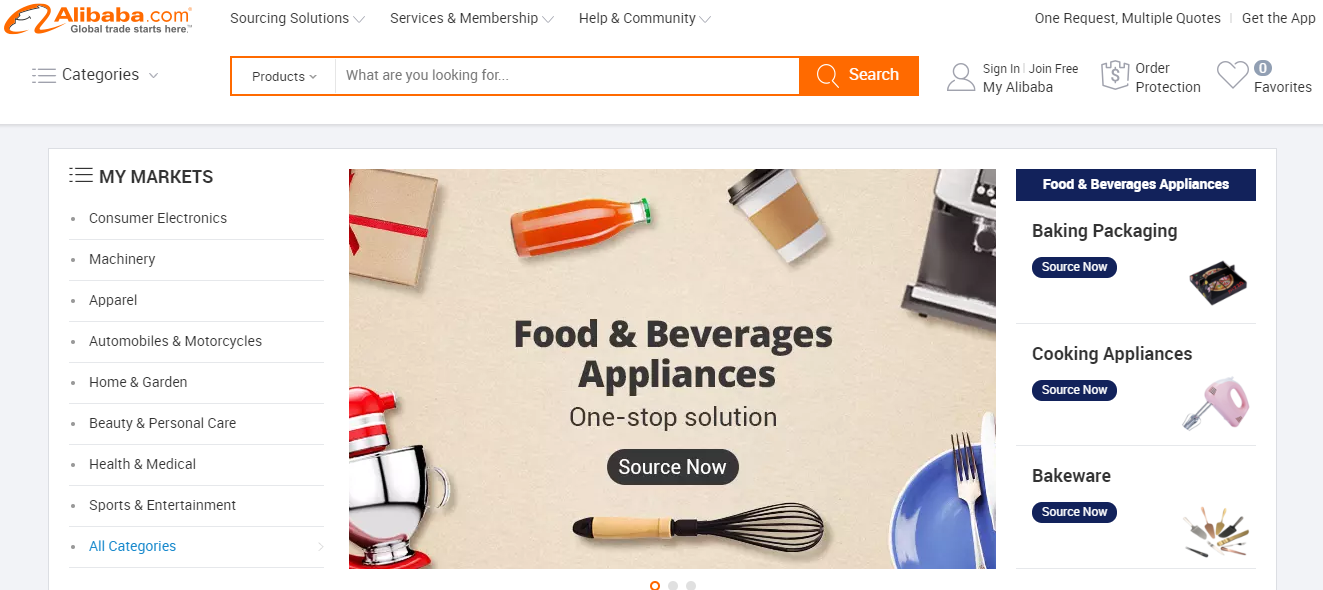
As the premier ecommerce provider in China, Alibaba stands out as an exceptional marketplace for B2B sellers. According to its annual report, The Alibaba Group boasts an impressive count of over 1.31 billion annual active consumers and recorded a remarkable revenue growth of $134.57 billion, marking a substantial 22.91% increase from the figures in 2021.
Functioning as a key platform for B2B manufacturers and wholesale suppliers, Alibaba.com serves as a fundamental cornerstone for numerous businesses. If your business revolves around selling products to other businesses, irrespective of geographical constraints, Alibaba.com emerges as the optimal choice.
Initiating your selling journey on Alibaba is a straightforward process, requiring completion of a simple form to establish your account.
Fees: Seller plans commence at $3,499 per year.
Top regions: China, United States, Russia, United Kingdom.
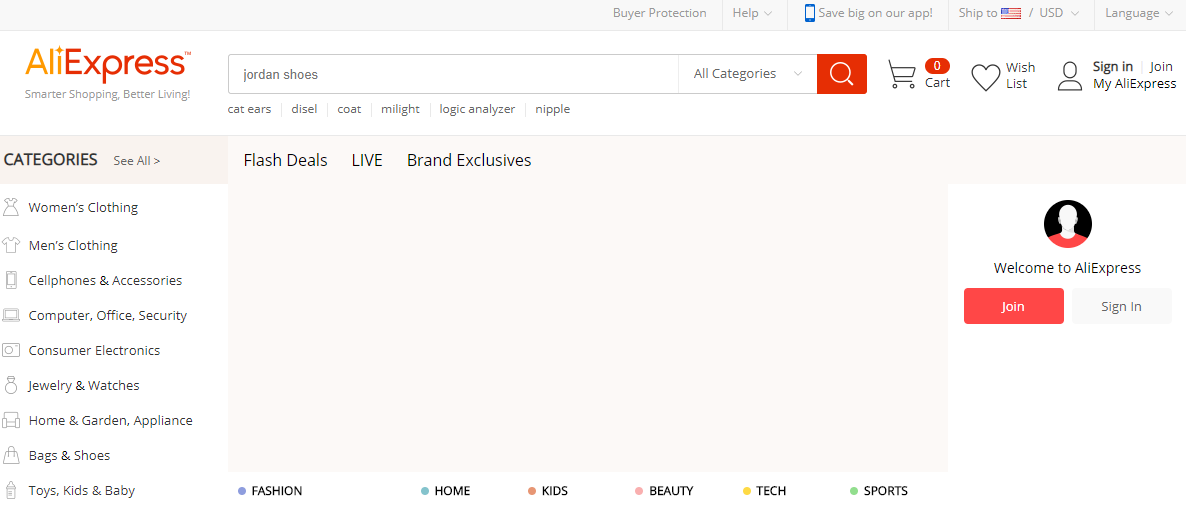 AliExpress, a subsidiary of the Alibaba Group, stands as a well-established B2C marketplace. Operating independently, AliExpress garners an impressive monthly traffic of around 500 million website visits and boasts a mobile app with hundreds of millions of downloads.
AliExpress, a subsidiary of the Alibaba Group, stands as a well-established B2C marketplace. Operating independently, AliExpress garners an impressive monthly traffic of around 500 million website visits and boasts a mobile app with hundreds of millions of downloads.
AliExpress’s appeal to numerous businesses lies in its extensive localization efforts, being available in 18 languages across 230 countries and regions. Particularly popular among dropshipping companies, the platform facilitates affordable direct-to-consumer shipping by many suppliers.
The process of selling on AliExpress mirrors the simplicity of other platforms: create an account, provide business information, and submit your application. Following this, you can customize your store and commence selling.
Fees: Commissions ranging between 5% and 8%.
Top regions: China, Brazil, Spain, United States, France, Korea.
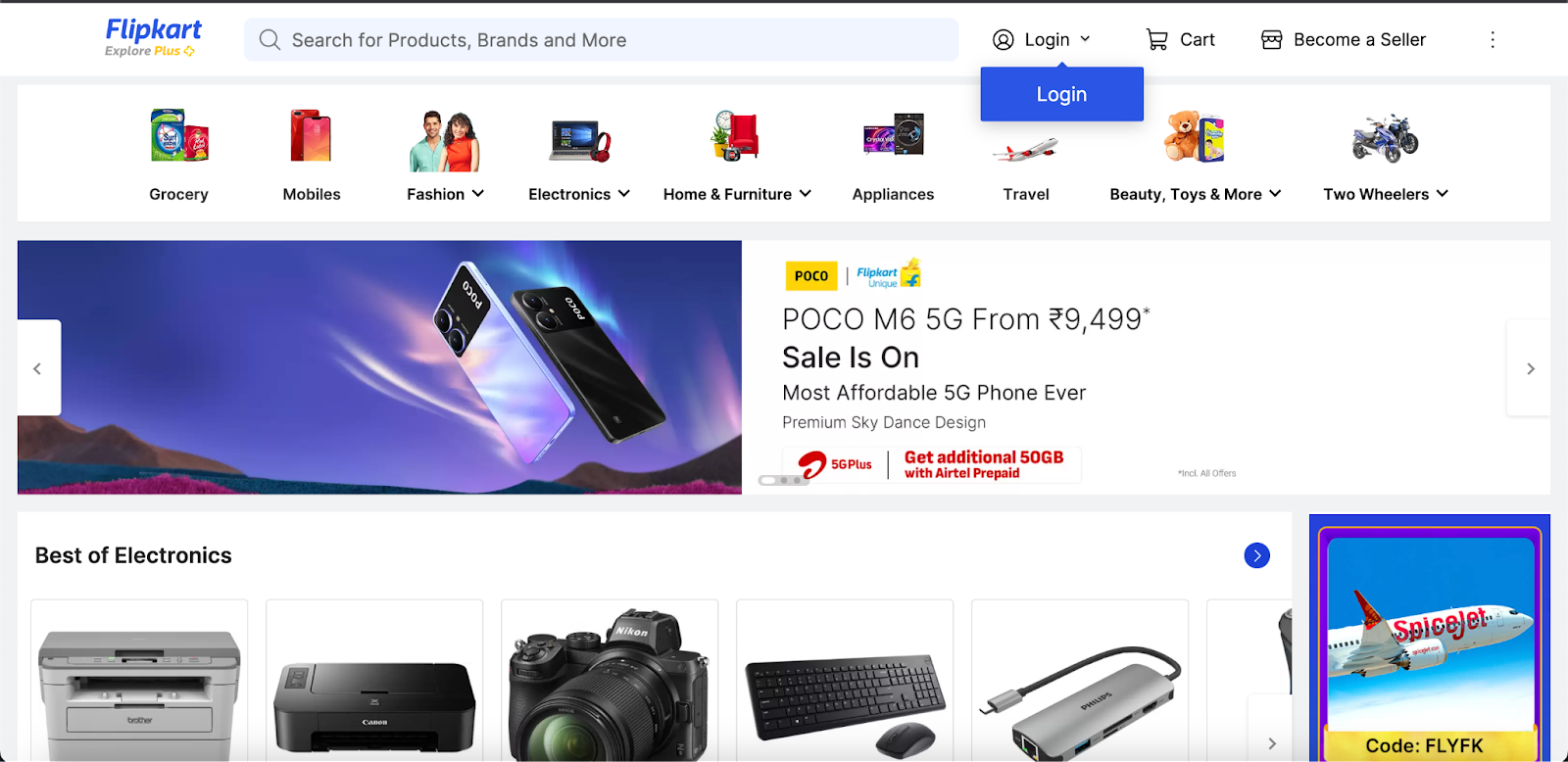
Flipkart is India’s answer to the likes of Aliexpress, Amazon and the other big names within the leading ecommerce marketplaces of the world. Being the largest in India, Flipkart is home to more than 10 million customers who are busy buying from more than 100,000 suppliers from around the world.
What makes Flipkart even better comes down to its efficient logistics network, delivering faster service throughout the nation, making it one of the most popular online selling sites in India.
Fees: Rates vary from 2.8% to 25%.
Top regions: India, United States, United Arab Emirates, United Kingdom.
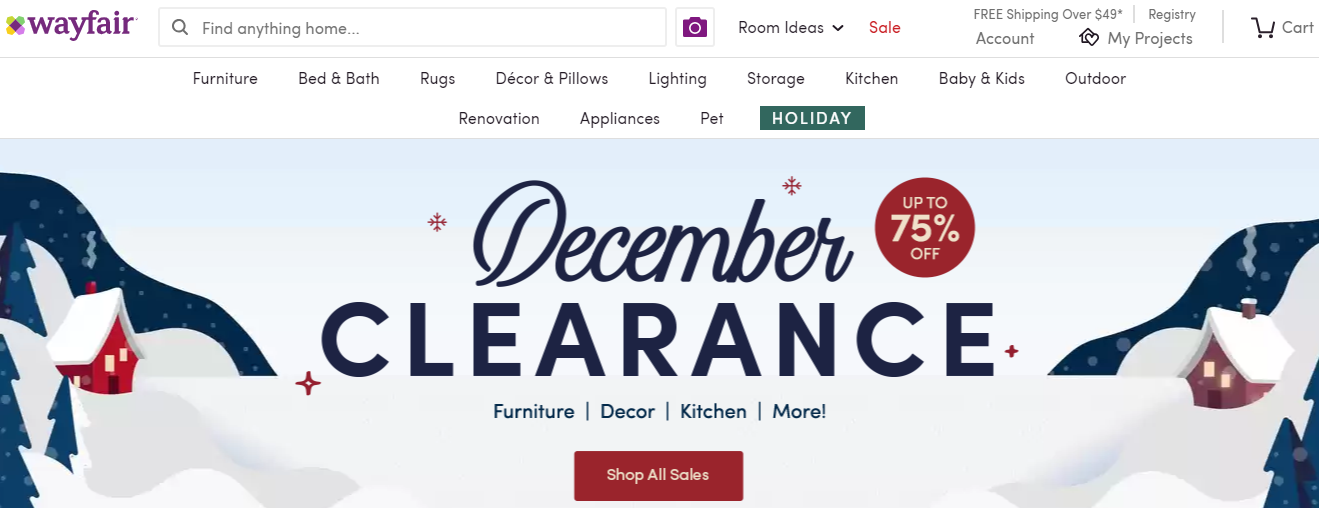
Launched as an alternative to Amazon in 2002, Wayfair is mostly focused on furniture. It also offers sweeter deals as compared to Amazon but is unable to cope up with Amazon’s extensive seller/vendor presence.
There are fewer categories to work with, but it is still visited by millions and with the average cart checkout in excess of $200. There are unique items for sale there. This makes Wayfair a really great ecommerce marketplace.
Often sellers who offer a more niche item that didn’t receive a commendable response on Amazon, they got it sold on Wayfair.
Fees: Wayfair doesn’t claim commissions or require shipping expenses
Top regions: U.S., Germany, Canada, and the U.K.

For a marketplace that’s focused on selling only renovations and furniture, Houzz is one of the largest marketplaces in the world. Having its own community to serve, Houzz gives furniture brands and products a great level of exposure with vendors/sellers increasing daily.
The low seller fee and an active community to benefit from, Houzz is a great marketplace for a niche focused on furniture and other household products.
Fees: 15% commission on all products
Top regions: United States, Canada, Australia
Well, it depends on what you are searching for. The rule of thumb is that you go with the one that has the most number of sellers on its platform.
Related post: How to choose where to sell your products online
The fact with ecommerce marketplaces is that with so much competition, it is really up to the customer to find the best price and the best deals. The Asian population use Alibaba and Aliexpress to offer and buy most products and the best deals. Not only that, there are lots of products with free shipping available, so most of them get their products delivered at no extra cost.
The population in the Americas have Amazon and eBay as their go-to place for buying anything online. Some even resort to Craigslist for better deals, even if it is not a marketplace. It usually depends on your location and what exactly you are looking for.
I hope the list proves to be helpful for you and if you think I have missed out on any online selling sites that you think should have been included, please mention it in the comments section below.
Want something extra? at Magenticians, we have developed our very own Ecommerce Hub, for all you Ecommerce enthusiasts, for everything Ecommerce. It’s basically a platform, a resource, an all-in-one solution, and a standalone ‘Hub’ to get everything from extensions, plugins to resources, do check it out.
Syed Muneeb Ul Hasan is a Magento Developer and Blogger at Magenticians - a platform of Magento Tutorials for beginners. He is an expert in PHP and Magento and prefers to educate users in the implementation of Magento. When not working, he loves to play games and watch cricket. You can follow him on Twitter.